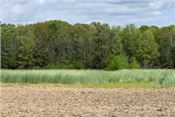The Nutrient Stewardship Entrance Exam For Production Agriculture

DR. LARRY OLDHAM
MISSISSIPPI STATE, MISS.
The ACT, a standardized test used by colleges for admission decisions, covers English, mathematics, reading, and scientific reasoning. These categories may be unfamiliar if you are a little older as they were revised in 1989.
Another ACT concept uses Best Management Practices (BMPs) to address concerns such as nitrogen or phosphorus movement in the landscape.
This note is an overview of the three subsystems: Avoid, Control, and Trap. Each subsystem and the BMPs to employ within them will be discussed more specifically in subsequent posts.
Avoiding is just what it says: planning and implementing practices that minimize, if not eliminate issues originating from nutrient movement in the landscape. This begins with managing nutrients according to the 4 R’s: Using the right amount of the right fertilizer, at the right time for the crop, and in the right place.
Other pathways to avoid issues are use BMPs that keep soil in place by limiting sheet and rill erosion or restrict livestock access to flowing waters.
Controlling nutrient movement is achieved by managing water on the fields that may contain both dissolved nutrients and solid soil particles with nutrient ions absorbed to them.
Trapping nutrients acknowledges that no matter the plan, agricultural landscapes are not closed systems. Some technologies help alleviate nutrient movement by stopping or delaying movement of dissolved solids in field borders or sediment basins. The longer moving water remains on the field surface, and not into an outlet, the greater the odds solids will settle.
What BMPs to use in any field is a site-specific determination. A one- size fits all is not available. Over 100 Conservation Practice Standards are available in Mississippi for growers working with the Natural Resource Conservation Service. Practices available in individual counties are decided by local Conservation District committees based on the local resource concerns, soils, and climate.
Some BMP options for avoiding nutrient movement, or controlling the movement, or trapping the nutrients if they move will be discussed in subsequent posts. ∆
DR. LARRY OLDHAM: Extension Soils Specialist, Mississippi State, Miss.